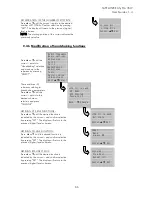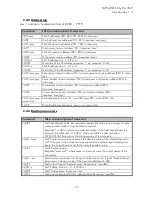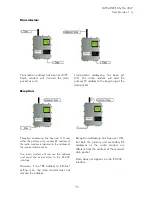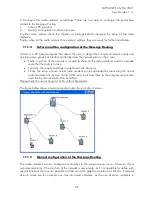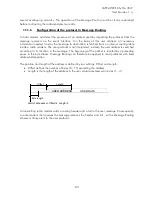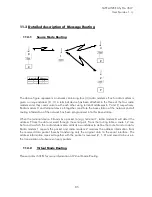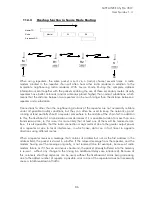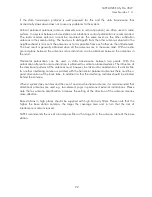
SATELLINE-EASy Pro 35W
User Guide v.1.4
77
For example, if the substation terminal devices are not able to check and form addresses by
themselves, addressing may be achieved with the help of the addresses of the radio modems
attached to these terminal devices. The base station may, in such a case, define the destination of
a message by adding the address of the corresponding radio modem into the beginning of the
data packet. The substation radio modem(s) will check the address and the corresponding radio
modem will identify and remove the address characters. In a similar way, the substation will add
when transmitting to the base station its address characters into the beginning of the data packet,
thus defining the origin of the sent data packet. In the base station radio modem, addresses have
been switched OFF, so that they are transmitted as is to the base station terminal device for
further processing.
10.3
Using repeaters and addresses in the same system
In systems with several repeaters, a substation and a base-station, addresses must be used in
radio modems. It is possible to realise also a system with only one repeater without addressing. In
such a case, the base station will however hear the message both from the substation and from
the repeater, in other words the message is duplicated as it moves along the route.
There are at least two ways of realising such a system depending on the capabilities of the
terminal devices in question and on the number of repeaters to be used and on their relative
positions to each other.
10.3.1
System with several repeaters
In systems with several serial or parallel-chained repeaters, addressing must be used to prevent
messages from ending up in loops otherwise formed by repeaters, and to ensure that only the
desired (addressed) radio modem receives the data intended for it.
All radio modems in the network must be set to a state, in which the RX-addressing is switched
ON and TX-addressing is switched OFF. Base-station and all substations add an address string in
the beginning of the data to be transmitted. In the relaying of the message addressing is used in
the following way:
R1 ADD R2 ADD S ADD
DATA
- The above is the data received from the base station terminal device, containing repeater
addresses (R1 ADD, R2 ADD) and the substation address (S ADD). Two characters define each
address.
R2 ADD S ADD
DATA
- The above is the same message after being relayed from repeater 1 to repeater 2.




